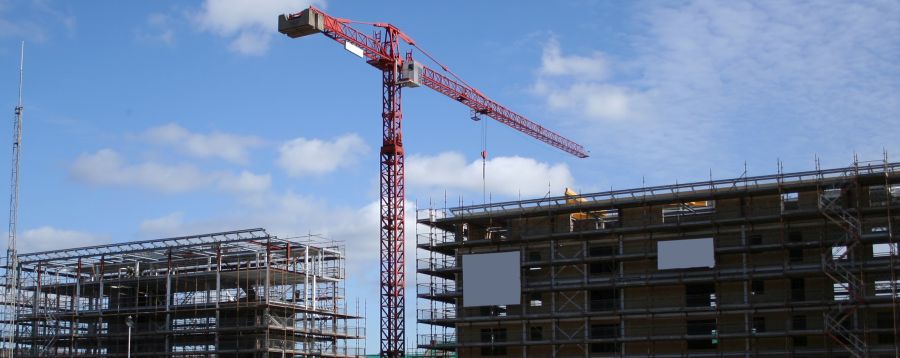
How OSHA Inspects Cranes and Derricks on Construction Worksites

In 2014, OSHA issued a directive for enforcing requirements of the Cranes and Derricks in Construction standard. The directive guides how OSHA inspects equipment covered by Subpart CC – Cranes and Derricks in Construction on construction worksites. This post will help you understand how OSHA inspects cranes on construction sites.
These are the first 10 of 20 areas inspectors are directed to review:
- Determine the adequacy of ground conditions beneath the equipment set-up area, such as the support/foundation, matting, cribbing, blocking, etc.
- Check for visible indications of repairs of the equipment.
- When overhead power lines are on the construction site, ask if the utility owner/operator was contacted and if the lines are energized. Obtain the voltage of the power lines (if known). Verify whether a work zone around the crane was demarcated and what encroachment prevention steps are being used.
- When a signal person is used on the worksite, verify the individual’s qualifications/documentation. Acceptable documents include both physical and electronic records.
- Verify the communication system being used by the crane operator and the signal person is the one specified on the signal person’s qualification documentation.
- If lift plans are being used, verify that they are being followed.
- When equipment is used to hoist personnel, identify who determined that it is infeasible to use another way to reach the work area and that it is necessary to use the crane for this task. This does not apply to steel erection activities under Subpart R.
- Verify whether employers are holding required meetings, such as planning meetings necessary for working near overhead power lines, conducting Assembly/Disassembly (A/D), or hoisting.
- Inspect all rigging equipment that is available for workers to use (slings, chokers, shackles, etc.) for damage, wear, safe working load tags, capacity, and safety factor.
- Verify that load chart and operations manuals are available, written in a language that the operator understands (specified on the operator’s certification), and that the information is applicable to the particular crane. Ask the operator or employe where the documents are kept. For example, see if the serial number on the load chart matches that of the crane.
OSHA published the construction crane and derrick rule in August 2010, and most of its provisions became effective in November of that year. The rule was revised to replace decades-old standards and address the significant number of fatalities associated with the use of cranes and derricks.
OSHA’s Cranes and Derricks Safety page has compliance information on equipment requirements for assembly and disassembly, qualified rigger, signal person qualifications and wire rope inspections; frequently asked questions; and presentations and videos explaining the revised rule and the hazards involved in crane operations.
Crane Safety Resources
- Download the directive here (pdf).
- Visit the OSHA Cranes & Derricks in Construction page.
- Browse crane safety signs and crane hand signal training materials at ComplianceSigns.com.

